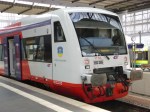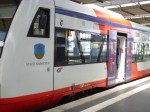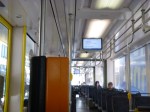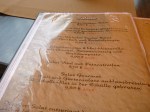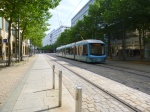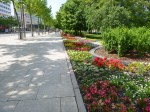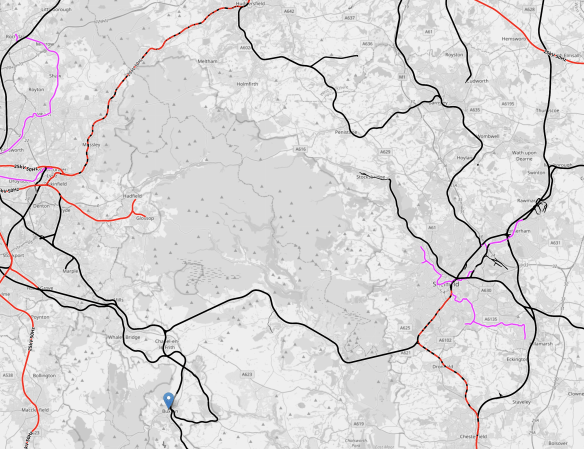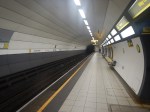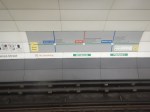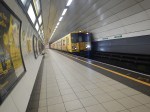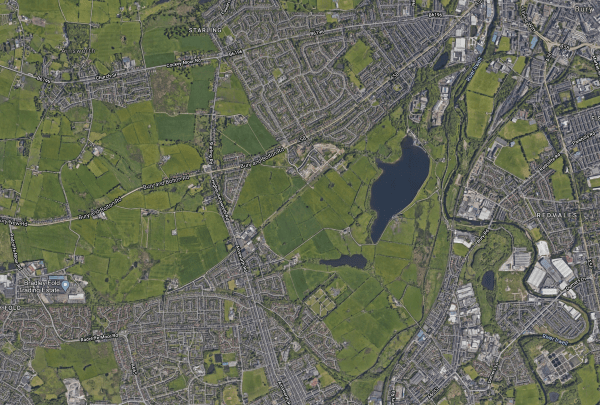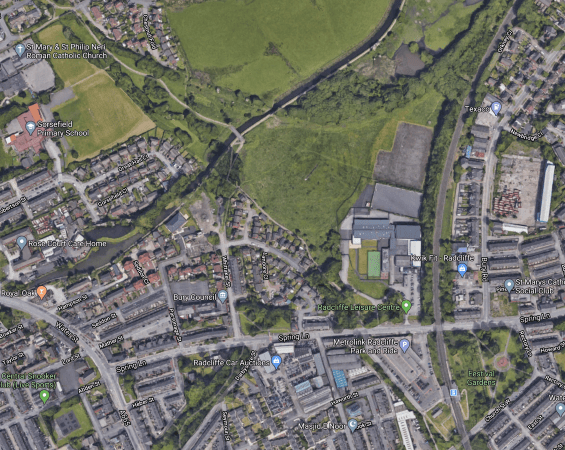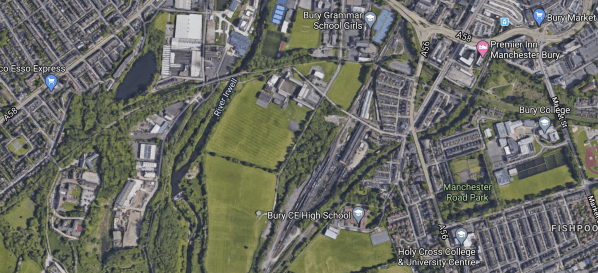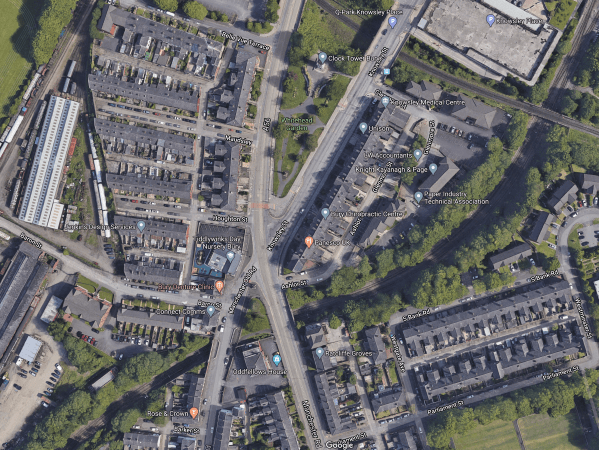FirstGroup’s Lumo Seeks To Launch Rochdale – London Open Access Service
The title of this post, is the same as that of this article on Railway Gazette.
These two paragraphs outline the service.
FirstGroup has applied to operate Rochdale – London open access passenger trains, more than 20 years after a short-lived through service ran between the two destinations.
On May 17 FirstGroup said that it had applied to the Office of Rail & Road to launch six Lumo-branded return journeys per day linking London Euston and Rochdale via the West Coast Main Line. The trains would call at Warrington Bank Quay, Newton-le-Willows, Eccles and Manchester Victoria.
These are my thoughts.
The Route Isn’t Fully-Electrified
The route is electrified between London Euston and Manchester Victoria stations, but the 10.4 miles between Manchester Victoria and Rochdale is not electrified.
In Extra Luggage Racks For Lumo, I also talk about the possibility of fitting traction batteries to Lumo’s Class 803 trains, so they could handle the 88.5 mile diversion on the East Coast Main Line via Lincoln.
Trains with a traction battery, with an 88.5 mile range, would be able to travel between Manchester Victoria and Rochdale and return.
How Long Would London Euston And Rochdale Take?
Consider.
- The fastest London Euston and Warrington Bank Quay services take 1 hour and 44 minutes
- The fastest Warrington Bank Quay and London Euston services take 1 hour and 47 minutes
- Northern’s Class 195 trains take between 44-51 minutes Rochdale and Warrington Bank Quay with three stops.
- Northern’s Class 195 trains take between 29-32 minutes Manchester Victoria and Warrington Bank Quay with two stops.
- I will add two minutes for the extra stop.
These are my estimates for overall journey times.
- London Euston and Manchester Victoria – 2 hours and 15 minutes
- London Euston and Rochdale – 2 hours and 29 minutes
- Manchester Victoria and London Euston – 2 hours and 21 minutes
- Rochdale and London Euston – 2 hours and 40 minutes
The fastest direct Avanti West Coast services between London Euston and Manchester Piccadilly take 2 hours and 6 minutes.
Could The Service Be Extended To Leeds?
For my timings between Rochdale and Warrington Bank Quay, I used Northern’s Leeds and Chester service.
This service goes between Manchester Victoria and Leeds calling at Rochdale, Todmorden, Hebden Bridge, Halifax, Bradford Interchange, New Pudsey and Bramley.
I estimate it would take about 3 hours 32 minutes.
When Bradford has a new through station, I wouldn’t be surprised if a train operator looked at this route between London Euston and Leeds.
As Leeds and Manchester Victoria is only 49.8 miles, Lumo’s battery electric trains, with 88.5 mile batteries sized for the Lincoln diversion on the East Coast Main Line, would have no difficulty serving Leeds, where they would charge before return.
Could Lumo Run Pairs Of Five-Car Trains Between London Euston and Manchester Victoria?
As I said in Ten-Car Hull Trains, Lumo’s sister company; Hull Trains, runs the occasional ten-car service.
Perhaps for a big football match or other event, Lumo might like to run ten-car trains between Manchester Victoria and London Euston.
I suspect they could do it if the platforms were long enough, but they wouldn’t be able to run a 260 metre ten-car train to Rochdale, as that station only has a 135 metre long platform.
Warrington Bank Quay Station Will Get Six Extra Non-Stop Trains To And From London
This would provide real competition to Avanti West Coast over this route.
Newton-le-Willows Station Is Only A Few Miles From The Town Of St. Helen’s
Newton-le-Willows station has 400 parking spaces and 32 disabled parking spaces.
Note.
- They parking is all free!
- There are regular local trains to Chester, Leeds, Liverpool Lime Street, Manchester Airport and Wigan North Western.
A six trains-per-day service to and from London, will help fill up the parking spaces.
Eccles Station Is Within Walking Distance Of Eccles Interchange
This OpenEailwayMap shows Eccles station and Eccles Interchange.
Note.
- The mauve tracks are the Manchester Metrolink.
- They terminate in the South-West at Eccles Interchange.
- The red tracks are the Liverpool-Manchester lines.
- Eccles station is a Northerly walk from Eccles Interchange.
This connection must be useful to more than a few.
I suspect if you’re going between London and Media City UK, Salford Quays or Piccadilly Gardens, you may be better to change to the Metrolink at Eccles.
Will Lumo’s Rochdale Service Run As A Flight With Avanti’s Glasgow Service?
Flighting is where two or more trains going on the same route run a few minutes apart.
- Every hour, on the half hour, an Avanti West Coast service for leaves London Euston for Glasgow Central.
- As with Lumo’s Rochdale service, the first stop is Warrington Bank Quay station.
- The Lumo service would leave London Euston a few minutes after Avanti’s Glasgow service.
- The distance between the two trains would be such, that if the first train stopped, the second train could stop safely.
- Digital signalling as is being installed on UK rail lines would make it easier to ensure safe separation.
But the benefit would be that both trains ran fast to Warrington Bank Quay station.
A Day-Trip To Manchester
If I’m right about the 2 hours and 15-21 minutes between London Euston and Manchester Victoria, then a day-trip would certainly be feasible.
Last Trains
This is a table of the last train times for Lumo between Newcastle and London.
- Weekdays – 20:27 21:35
- Saturdays – 18:27 19:22
- Sundays – 19:24 20:21
Note.
- The first time is the last Northbound departure.
- The second time is the last Southbound departure.
- Are these late enough for football matches?
I shall be interested to see the proposed last train times for the Manchester route.
Conclusion
It looks like, this could be a very worthwhile service.
Could Manchester Airport Be Accessed From The West By A Tunnel Under The M56?
This OpenRailwayMap shows the railways of East London between Dalston Junction and Stratford International stations.
Note.
- Dalston Kingsland station is marked with an arrow in the West of the map.
- Stratford International station is marked by the blue lettering in the East of the map.
- The orange line between them is the North London Line.
- There are also two pink lines, which indicate High Speed One, which is dug several metres below the North London Line.
It can’t be much different to dig a high speed railway underneath a motorway. Has anybody done this?
This OpenRailwayMap shows the railways leading to Manchester Airport.
Note.
- Junctions 5 and 6 of the M56 motorway are on the Western edge of the Airport.
- The red tracks are the Styal Line.
- The mauve tracks are the Metrolink.
- It should be noted that railway lines pass under Heathrow Airport’s runways.
Point 4 makes me sure, that Manchester Airport can have a station connected to the West by a railway under the M56.
This OpenRailwayMap shows the railways around Weaver Junction on the West Coast Main Line, where the trains branch off to Liverpool.
Note.
- The West Coast Main Line goes down the Eastern side of the map.
- Warrington Bank Quay is the next station to the North.
- The Liverpool Branch goes off to the West.
- The M56 tuns diagonally across the map from the North-East corner crossing both both branches of the West Coast Main Line.
This Google Map shows where the M56 crosses over the West Coast Main Line to Warrington Bank Quay.
Note.
- The M56 motorway is obvious.
- The Eastbound motorway goes to Manchester Airport and Manchester.
- The junction is numbered 11.
- The railway runs down the Western side of the map.
I believe that it would be possible to connect a railway running East under the motorway to the West Coast Main Line.
This Google Map shows where the M56 crosses over the Liverpool branch of the West Coast Main Line.
Note.
- There is no motorway junction here.
- The North-East bound motorway goes to Manchester Airport and Manchester.
- The railway runs slightly diagonally across the bottom of the map.
- The Westbound railway goes to Runcorn and Liverpool.
- The Eastbound railway goes to Weaver Junction, Crewe and the South.
There would only need to be a connection between Liverpool and the railway under the motorway going to and from Manchester Airport.
I have some further thoughts and questions.
This Is Just My First Thought
I am happier about the connection to the Liverpool branch than the Northern connection.
But then I feel there are several routes at both junctions, some of which will take a wider route.
How Long Will The Tunnels Be?
Between Junctions 11 and 6 on the M56 is 16 miles.
At What Speed Would The Trains Run?
I suspect that once on the straight section between Junctions 11 and 6, speeds of up to 90 or 100 mph should be possible, but speeds would probably be lower at the junctions to the West Coast Main Line.
How Would It Connect To Manchester Piccadilly?
The tunnel would continue the other side of the Airport and it’s a further 9.4 miles to under Manchester Piccadilly.
In The Rival Plans For Piccadilly Station, That Architects Say Will ‘Save Millions’, I wrote about Weston Williamson’s plan for Manchester Piccadilly station.
This was their visualisation.
Note.
- In the visualisation, you are observing the station from the East.
- The existing railway lines into Piccadilly station are shown in red.
- Stockport and Manchester Airport are to the left, which is to the South.
- Note the dreaded Castlefield Corridor in red going off into the distance to Oxford Road and Deansgate stations.
- The new high speed lines are shown in blue.
- To the left they go to Manchester Airport and then on to London, Birmingham and the South, Warrington and Liverpool and Wigan, Preston, Blackpool, Barrow-in-Furness, the North and Scotland.
- To the right, they go to Huddersfield, Bradford, Leeds, Hull and the North East, and Sheffield, Doncaster and the East.
- Between it looks like a low-level High Speed station with at least four tracks and six platforms.
- The high speed lines could be oriented so they ran East-West, rather than North-South in this visualisation.
- The Manchester Metrolink is shown in yellow.
The potential for over-site development is immense. If the Station Square Tower was residential, the penthouses would be some of the most desirable places to live in the North.
Onward From Manchester Piccadilly
I would hope that a connection could be made to the Huddersfield Line to the East of Manchester Piccadilly station, so that trains could use the TransPennine Upgrade all the way to Leeds.
Manchester Buzzing To Put Rail Into Its Bee Network
The title of this post, is the same as that of this article on the Railway Gazette.
These two paragraphs introduce the article.
Locally branded stations and integrated ticketing are among the improvements to Greater Manchester’s local rail services envisaged from 2025 under a landmark devolution deal.
The deal agreed with the government on March 15 brings GM Mayor Andy Burnham and local council leaders significant additional powers in several policy areas, including transport. The single funding settlement is similar to those in place covering Scotland and Wales, but this and a similar deal for the West Midlands is the first time such a flexible grant has been granted to English regions.
Included in the deal are the following.
A London-Style Network
It is described in this paragraph.
Greater Manchester has set itself a target of rolling out so-called ‘London style’ transport across modes by 2030. While Transport for Greater Manchester already directly manages the Metrolink light rail network, buses are now being brought under tighter regulation through a franchising model, and TfGM aspires to introduce integrated smart ticketing across the city-region. Today, while paper travelcards can be bought covering buses, Metrolink trams and trains, these are poorly marketed and often more expensive than the fares offered by individual bus operators; there is also no ability for daily or weekly price capping to be introduced.
I hope that Manchester follows London’s rules.
- One card and any bank or credit card gives full access to buses, trains and trams.
- Daily, weekly and monthly caps.
- Freedom Pass or equivalent for those that need them.
- Comprehensive transport mapping.
- Visitor-oriented travel information offices in major stations.
I feel very strongly about the last two, as measures like these encourage visitors to return.
Trials of the ticketing should start by the end of the year.
The Bee Network
This is outlined in this sentence.
Together, the local transport network is to be branded ‘the Bee Network’, reflecting an enduring emblem of the area’s industrial heritage.
I like the name.
- The bee is one of the symbols of the city according to this Wikipedia entry.
- Bees are on the coat of arms of the City of Manchester.
- Bee symbols are used by Manchester and local businesses.
But perhaps most importantly, the bees were a symbol of recovery of the city after the May 2017 Manchester Arena bombing.
The Addition Of Twenty Percent Of the Local Rail Network
This is outlined in this sentence.
Under the agreement announced on March 15, around 20% of local rail services, currently operated by Northern Trains and managed under contract with the Department for Transport, will be brought into the Bee Network.
These rail services are to be added.
- Wigan – Manchester Victoria via the West Coast Main Line and a proposed station at Golborne, which could open from 2025.
- Stalybridge – Southport via Atherton
- Glossop – Hadfield – Manchester Piccadilly
- Rose Hill Marple – Manchester Piccadilly
- Buxton – Manchester Piccadilly
- Alderley Edge – Manchester Piccadilly
I shall discuss each route in detail separately.
New Trains?
Consider.
- The Wigan and Alderley Edge routes are shared with 125 mph trains.
- The diesel trains on the Buxton and Rose Hill Marple routes will need to be replaced.
- The Buxton route is a very stiff climb.
- Do the Class 323 trains to Glossop and Hadfield need to be replaced?
- The Buxton, Southport and Rose Hill Marple routes are not fully-electrified.
I would have two separate fleets.
A small number of 110 mph electric trains for the Wigan and Alderley Edge routes. Class 350, 360, 379 and 386 trains would be possibilities.
An appropriate number of electric for the other routes. Some would have a battery capability to handle the partially-electrified routes. Merseyrail’s Class 777 could be ideal.
Note.
I am fairly certain, that the Class 777 trains can run as tram-trains, which would be useful for Manchester.
A rough calculation indicates that the ideal battery sizes for Southport and Buxton, could be similar.
The battery for the Rose Hill Marple route would be smaller.
There could be advantages if Merseyrail and Manchester had similar high quality trains.
Integration Of The Various Modes Of Transport
This is outlined in this paragraph.
Meanwhile, the Greater Manchester Combined Authority is to establish a North West Regional Business Unit and GM Rail Board to improve local scrutiny of rail service performance and shape the integration with other modes in the Bee Network.
This is critical to the successful development of the Bee Network.
Conclusion
It’s now up to Manchester to first make it work and then develop it for the benefit of the people and businesses of the City, and not forgetting the visitors.
Integration Of The Various Modes Of Transport
This is outlined in this paragraph.
Meanwhile, the Greater Manchester Combined Authority is to establish a North West Regional Business Unit and GM Rail Board to improve local scrutiny of rail service performance and shape the integration with other modes in the Bee Network.
This is critical to the successful development of the Bee Network.
Manchester Arena Attack: Families ‘Disgusted’ By Memorial Trespassing
The title of this post, is the same as that of this article on the BBC.
These are the introductory paragraphs,
Families of people killed in the Manchester Arena attack have said they were “disgusted” after a memorial site for the 22 victims was trespassed on.
The Glade of Light memorial in the city centre remains a building site and does not officially open until the new year.
Two bereaved families said they were appalled to find the security fences pulled down on Sunday.
The article also said this.
Ms Curry said she found hundreds of people were walking through the area, which is supposed to be closed to the public.
She said one man stood on a memorial stone and was abusive when challenged, another woman vomited all over the area, and groups of youths were openly smoking drugs.
I can’t understand what led to this aggressive trespass.
When, I am in certain cities, there does seem to be more low life on the streets than you habitually see in London.
I do wonder, if it is partly because of London’s transport regulations and actions as laid down by the Mayor and Transport for London.
London has an extensive CCTV network and after the London bombings of July the seventh and the shooting of Jean Charles de Menezes in 2005, I’m sure it was improved.
Did the improved CCTV and the police action in the shooting the unfortunate Brazilian, deter a lot of low life from going to the centre?
Ken Livingstone or was it Boris, introduced a policy of banning alcohol on London’s transport system.
The precise details are given in this recent article on the Sun.
I have a feeling it had a positive effect, but did it mean that less drunks found their way to the centre?
In 2011, I sat next to a guy on a Manchester bus going from Piccadilly Gardens to Bury. I noticed that about a dozen youths were harassing the driver, trying to get his fare money and remarked on this to my companion.
My companion on hearing my London accent, said you don’t get that in London because of the contactless ticketing, as there is no fare money on the bus.
I was surprised at his reply and asked him to explain. It turned out he was a Trade Union Official, who looked after bus workers in Manchester. He told me his Union wanted a London-style contactless ticketing system, as it had drastically cut the number of attacks on staff in London.
Having worked with the Metropolitan Police on the analysis of data, they have also found that contactless ticketing helps in the tracing of people through London’s transport network and has solved several serious crimes.
Conclusion
I feel that terrorism and London’s reaction to it, banning of alcohol on public transport, contactless ticketing and other measures have helped keep drunks and those up to no good out of the centre.
Metrolink Tram Drivers To Strike After ‘Pitiful’ Pay Offer
The title of this post, is the same as that of this article on Railnews.
The strikes will be on the 25th and 26th September, which coincide with a Manchester United home match and the Great Manchester Run.
It would appear that Unite’s new boss; Sharon Graham means business. And in Manchester’s case, a drop in business activity for two days.
I wonder how many extra tonnes of carbon dioxide will be emitted in Manchester on each day of the strike, as people swap from the electric trams to their cars.
Tram-Train Operation To Continue In Sheffield As New Systems Proposed
The title of this post, is the same as that of this article on Rail Magazine.
This is the introductory paragraph.
Tram-trains will continue running in South Yorkshire beyond the end of the two-year trial period, with the Government believing it could act as an inspiration for similar schemes elsewhere.
The article also suggests that more than ten transport authorities want their own tram-train systems in cities including Manchester, Birmingham and Glasgow.
Possibly One Of The Best Underground Railways In A Smaller City In The World!
I took these pictures, as I took the Wirral Line between James Street and Lime Street stations.
I do compare them with the dingy inside of Essex Road station, which was refurbished by British Rail about the same time.
Merseyrail’s stations and trains are generally immaculate and that can’t be said for the dirty and tired infrastructure on the Northern City Line. As I indicated in the title of this post, t is one of the best underground railways under the centre of a smaller city. Liverpool would probably be regarded as a second size of city as it lacks the several millions of London, Paris or Berlin.
The tunnels of Merseyrail’s Northern and Wirral Lines, would have been probably been used as a model for British Rail’s proposed Picc-Vic Tunnel, that sadly never got to be built!
Manchester would be very different today, if it had an underground railway across the City to the standard of that in Liverpool or Newcastle.
This map clipped from Wikipedia show the proposed route of the Picc-Vic Tunnel.
Some of the other proposals included.
- The tunnel would be twin bores and jus under three miles long.
- The tunnel would be electrified with 25 KVAC overhead wires.
- The rolling stock would have been Class 316 trains, which would have been similar to those on Merseyrail.
- Train frequency could have been forty trains per hour (tph)
In some ways the specification was more ambitious than Crossrail, which might be able to handle 30 tph, at some time in the future. But Dear Old Vicky, which was designed at the same time, is now handling forty tph.
Wikipedia says the following routes could have run through the tunnel.
Note.
- The Styal Line now provides the link to Manchester Airport.
- The route map on the Wikipedia entry, shows only Bury and Bolton as Northern destinations. But surely fanning out the trains could have run to Barrow-in-Furness, Blackburn, Blackpool, Burnley, Clitheroe, Colne, Hebden Bridge, Kirkby, Preston, Rawtenstall, Tochdale, Southport, Stalybridge, Todmorden, Wigan and Windermere
The only problem, I could see would be that there would need to be a lot of electrification North of Manchester, some of which has now been done.
There have also been developments in recent years that would fit nicely with a system of lines running through the Picc-Vic Tunnel.
More Services In Manchester Piccadilly And Manchester Victoria Stations
If you look at Liverpool Lime Street station after the remodelling of the last few years, the station is now ready for High Speed Two.
You could argue, that it would be more ready, if the Wapping Tunnel connected services to and from the East to the Northern Line, as I wrote about in Liverpool’s Forgotten Tunnel, as this would remove a lot of local trains from the station.
The Picc-Vic Tunnel would have done the same thing for Manchester Piccadilly and Manchester Victoria stations and removed the local services.
This would have left more space for High Speed Two and other long distance services.
Northern Powerhouse Rail
The original plan also envisaged an East-West Tunnel at a later date. – Northern Powerhouse Rail?
But the creation of capacity by the diversion of local services from Manchester Victoria into the Picc-Vic Tunnel, would surely have enabled the station to be developed thirty years ago as a station on an improved TransPennine route.
Tram-Trains
The system would have accepted tram-trains, which hadn’t been invented in the 1970s.
Manchester Airport
Manchester Airport had only one runway in the 1970s and I think only a few would have believed, it would have expanded like it has.
The Picc-Vic Tunnel would create a superb service to the Airport, at a frequency upwards of six tph.
High Speed Two
The Picc-Vic Tunnel would have created the capacity in for Manchester Piccadilly station and allowed High Speed Two services to use the station.
In The Rival Plans For Piccadilly Station, That Architects Say Will ‘Save Millions’, I talked about a radical plan for extending Manchester Piccadilly station for High Speed Two, that has been put forward by Weston Williamson; the architects.
This sort of scheme would also fit well with the Picc-Vic Tunnel.
Conclusion
Manchester was short-changed and not building the Picc-Vic Tunnel was a major mistake.
It would have created an underground railway in a similar mould to that of Liverpool’s, but it would probably have served a larger network.
They would probably be the best pair of underground railways for smaller cities in the world.
Beeching Reversal – Reinstatement of Bolton-Radcliffe / Bolton – Bury
This is one of the Beeching Reversal projects that the Government and Network Rail are proposing to reverse some of the Beeching cuts.
This article in the Bury Times is entitled Plans For Bolton Metrolink Route To Radcliffe See New Bid Submitted. This is the introductory paragraphs.
A bid to secure funding for a tram link between Bolton and Radcliffe has been submitted to the government.
Mark Logan, the MP for Bolton North East, hopes to secure part of the Department for Transport’s £500m Restoring Your Railway Ideas Fund to connect the town to the major public transport network.
The proposal submitted shows Metrolink connecting Bolton, Radcliffe and Bury by reviving an existing disused track bed; bridging the gap between some of the more deprived areas along the route.
This Google Map shows the triangular area between Bolton, Radcliffe and Bury.
Note.
- Bolton is just off the Western edge of the map.
- Bury is in the North East corner of the map.
- Radcliffe is at the Southern edge of the map, close to the point of the triangular green space.
- There is already a Metrolink line between Bury and Radcliffe.
If you look at this map on a larger scale, you can see the scars of old railway lines between Bolton and Bury and Bolton and Radcliffe.
I will take a more detailed look at this proposal.
Bolton
This Google Map shows the Western point of the triangle, where it connects towards Bolton.
Note.
- The disused railway appears to run South of the Bradley Fold Trading Estate.
- It then split into two branches in the middle of the map.
- The Northern branch goes off in a North-Easterly direction to Bury.
- The Southern branch goes off in a South-Easterly direction to Radcliffe.
I’ve followed the route of the disused railway to the West and it goes all the way to the centre of Bolton.
This Google Map shows between Bolton and Bradley Fold.
This railway used to be part of the Liverpool and Bury Railway. This map, which has been clipped from Wikipedia, shows the route.
This information came in a comment from FS (Thanks!) and there are some interesting bridges and viaducts on the route.
Looking at the route from my virtual helicopter, much of the route between Bolton and Radcliffe, is now a walking and cycle route, so there will have to be some careful design to get shared use right.
Radcliffe
This Google Map shows the Radcliffe point of the triangle.
Note.
- The Bury Line of the Manchester Metrolink runs down the Eastern side of the map.
- The Radcliffe tram stop, with its Park-and-Ride is in the South-East corner of the map.
- The disused railway from Bolton joins the map in the North-West corner.
This Google Map avows the Radcliffe tram stop.
I don’t think it would be the most challenging of projects to connect the Radcliffe tram stop to a tram branch to and from Bolton.
- There seems to be plenty of space on both sides of the main road.
- Extra platforms could probably be added for Bolton trams if required.
Although, there could be problems threading the route, through the new housing and over the viaducts and bridges.
Bury
This Google Map shows the South-West approaches to Bury.
Note.
- Bury Interchange is in the North-East corner of the map.
- The tracks and sidings of the East Lancashire Railway can be seen running South-West from the centre of Bury.
- The proposed line from Bolton enters the map in the South West corner.
Where will the new line terminate, as getting across the town might be expensive?
New Tram Stops
There is a Wikipedia entry, which is entitled Proposed Developments Of Manchester Metrolink, which says nothing about the Bolton – Radcliffe and Bolton – Bury Lines.
But it does indicate, there may be two new stops between Bury Interchange and Radcliffe tram stop.
Buckley Wells
The Wikipedia entry for Buckley Wells tram stop says this.
Buckley Wells is a proposed tram stop on the Bury Line of Greater Manchester’s Metrolink light rail system. It is to be between Bury Interchange and Radcliffe Metrolink station, in the Buckley Wells area of Bury, north of Fishpool and south of Bury town centre.
The proposed site of Buckley Wells stop, by the A56 road, is owned by Transport for Greater Manchester, was proposed in 2003, offering (in addition to the Metrolink stop and services for southern Bury) a park and ride facility, and opportunity to provide an interchange with the East Lancashire Railway.
This Google Map shows the wider area of the site.
Note.
- The Bury Line of the Manchester Metrolink runs SW-NE across the map.
- The A56 Manchester Road runs roughly North-South and crosses over the Bury Line.
- The tracks and sidings of the East Lancashire Railway, can be seen in the North-West corner of the map.
- The main route of the East Lancashire Railway can be seen crossing the Bury Line in the North-East corner of the map.
If you follow the Bury Line back towards Manchester, there is a connection between the Manchester Methrolink and the East Lancashire Railway.
Elton Reservoir
The Wikipedia entry for Elton Reservoir tram stop says this.
Elton Reservoir, also known as Warth, is a proposed tram stop on the Bury Line of Greater Manchester’s Metrolink light rail system. It is to be located between Bury Interchange and Radcliffe Metrolink station, southeast of Elton Reservoir and south of Bury town centre.
This Google map shows the wider area of the site.
Note.
- The Bury Line runs North-South from the North-East corner of the map.
- The stop is being proposed for new housing, that might be built in the area.
It should be noted that the proposed Bolton – Bury tram line would run on the reservoir side of the houses in the North-West corner of the map.
Infrastructure
On a quick look, the two new lines and the two new tram stops, don’t appear to be too challenging.
The only parts that appear difficult might be.
- Running the trams between Bolton Town Centre and Bradley Fold.
- Running the trams into Bury Town Centre.
- Some of the Radcliffe route seems to have been built on.
But there doesn’t seem to be any bridges over major roads or waterways.
Conclusion
There is a lot to like about these two new tram routes.
Manchester Metrolink Opens Trafford Park Line
The title of this post is the same as that of this article on Railway Gazette.
This is the introductory paragraph.
The 5·5 km Manchester Metrolink light rail extension to the Trafford Centre shopping complex was opened for revenue service on March 22, around seven months ahead of the original target date.
I had hoped to go up to Manchester on the day it opened to take a few pictures, but COVID-19 kyboshed that!





